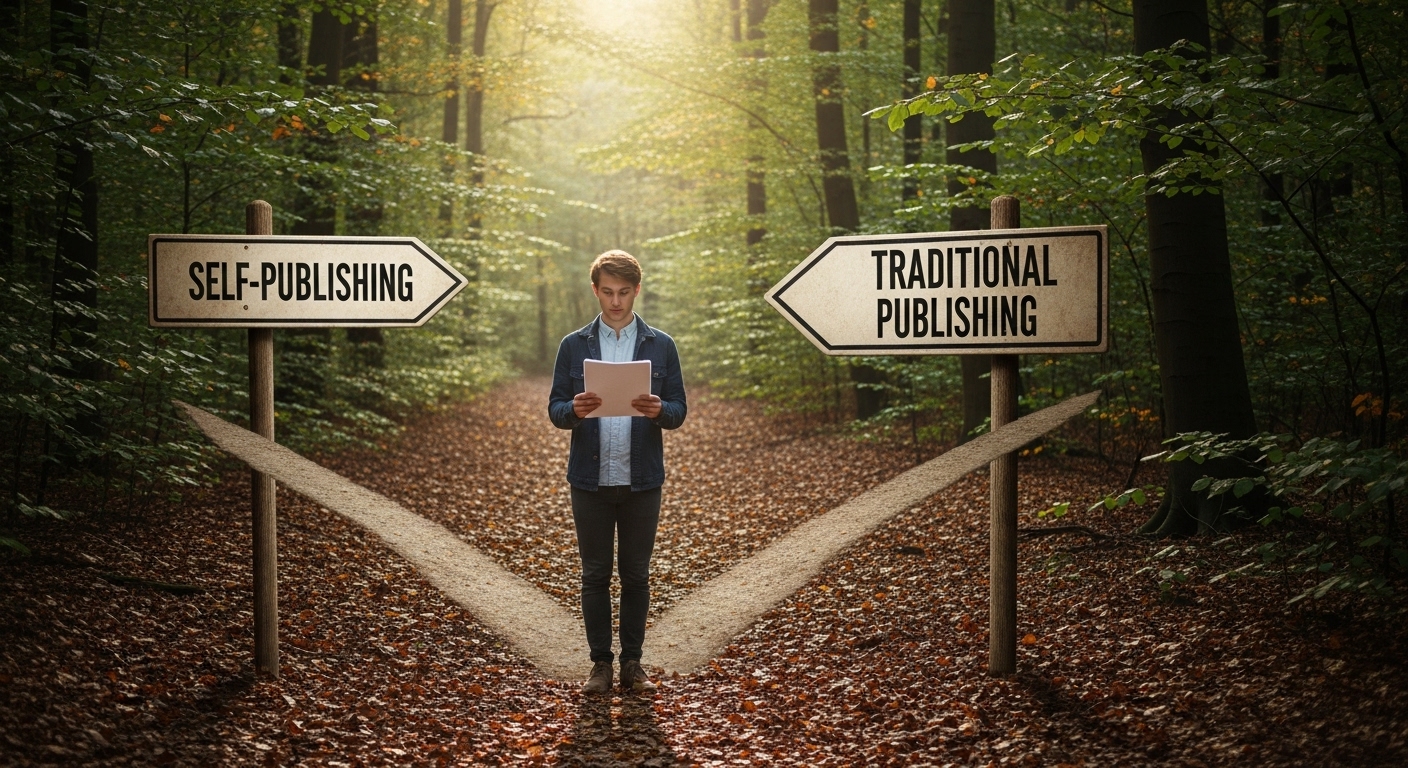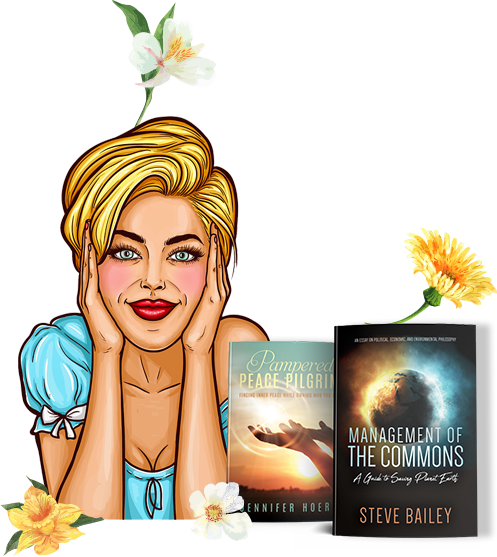Self-Publishing vs. Traditional Publishing: Which Path Is Right for Your Book in 2025?
Publish Your Book View 50% off Pricing
In the ever-evolving world of book publishing, 2025 stands as a pivotal year. With new technologies, expanded global readership, and shifting author expectations, choosing between self-publishing and traditional publishing has become more complex—and more personal—than ever before. For aspiring and established writers alike, understanding both paths is critical to making the right decision for your book, your career, and your goals.
This article explores the differences, advantages, and drawbacks of both publishing models, offering clarity in a market full of choices. Whether you’re writing your first novel, a memoir, or a non-fiction masterpiece, this guide will help you determine the right publishing journey in today’s dynamic literary landscape.
Table of Contents
ToggleUnderstanding the Two Paths
What Is Traditional Publishing?
Traditional publishing typically involves submitting a manuscript to a publishing house, which may include large houses (like Penguin Random House or HarperCollins), mid-size publishers, or independent presses. Once accepted—often via a literary agent—the publisher handles editing, design, printing, marketing, and distribution.
Authors typically receive an advance against royalties and do not incur upfront costs.
What Is Self-Publishing?
Self-publishing allows authors to publish their work independently, typically through platforms like Amazon Kindle Direct Publishing (KDP), Apple Books, IngramSpark, or Kobo Writing Life. The author is responsible for every stage of the publishing process: editing, design, marketing, and sales.
While this route offers more control and a larger share of royalties, it also involves investment—both time and money.
Key Differences: A 2025 Perspective
1. Control and Creative Freedom
Traditional:
- Limited creative control.
- Publishers may change titles, covers, and even storylines.
- You’re part of a larger machine with established market expectations.
Self-Publishing:
- Full control over every aspect—cover design, pricing, release dates, even audiobook rights.
- Ideal for niche books or unconventional formats.
In 2025, authors highly value ownership. Self-publishing caters well to this trend, especially with AI-driven tools for design and layout.
2. Time to Market
Traditional:
- Often 12–24 months from acceptance to release.
- Involves submission, contract negotiations, editing, and scheduling.
Self-Publishing:
- Can be published within weeks or even days.
- Digital-first strategies allow immediate response to market trends.
For authors reacting to current events or trends, self-publishing offers a timely advantage.
3. Costs and Earnings
Traditional:
- No upfront costs; publisher invests in your book.
- Royalties are lower—typically 5–15% of print sales, 25% of eBooks.
Self-Publishing:
- Costs vary depending on services (editing, cover design, ISBNs, marketing).
- Royalties are much higher—up to 70% for eBooks on platforms like KDP.
In 2025, expect to invest between $500 and $3,000 for a professional-quality self-published book. Popular service providers include:
- Reedsy – for freelance editors, designers, and marketers
- Fiverr/Upwork – affordable editing and formatting options
- BookBaby – for all-in-one publishing services
- IngramSpark – for wide distribution, including libraries and bookstores
4. Distribution and Reach
Traditional:
- Strong bookstore and library presence.
- Access to foreign rights, film rights, and major literary awards.
Self-Publishing:
- Primarily online (Amazon dominates in eBook and paperback sales).
- In 2025, more indie authors are using print-on-demand for global reach through IngramSpark and Lulu.
Note: Libraries and independent bookstores are more receptive to self-published books than they were a decade ago—but you still need a polished product and a compelling pitch.
5. Marketing and Platform Building
Traditional:
- Publishers offer some marketing support—but mostly for top-tier authors.
- Authors are still expected to have strong platforms (newsletters, social media, events).
Self-Publishing:
- Entirely dependent on the author’s effort and strategy.
- Tools like BookBub, Facebook Ads, and TikTok (BookTok) are powerful, if used wisely.
Marketing is the great equalizer in 2025. Both types of authors must actively promote their work. Success often depends less on the publishing route and more on an author’s connection with readers.
Realities and Myths in 2025
Myth 1: “Traditional publishing guarantees success.”
Many traditionally published books sell modestly. Without active author involvement, even big-name releases can underperform.
Myth 2: “Self-publishing is only for amateurs.”
In 2025, many award-winning and bestselling authors are hybrid—publishing some works independently and others traditionally. Names like Hugh Howey, Colleen Hoover, and Brandon Sanderson have used both paths with massive success.
Myth 3: “You need a literary agent to get published.”
True for most large publishers, but not for small presses or indie publishers, many of which accept unsolicited submissions.
Which Path Is Right for You?
Choosing your publishing path depends on your goals, strengths, and resources. Here’s a quick breakdown:
|
Factor |
Traditional Publishing | Self-Publishing |
| Control | Limited |
Full |
|
Speed |
Slow | Fast |
| Upfront Cost | None |
Moderate |
|
Royalties |
Lower | Higher |
| Marketing | Shared, limited |
Entirely self-driven |
|
Prestige |
Still valued | Gaining legitimacy |
| Long-Term Career | Structured |
Entrepreneurial |
Hybrid Publishing: A Growing Middle Ground
In 2025, the lines between self and traditional publishing continue to blur. Hybrid publishing—a model where the author shares costs but also gets professional support—is rising in credibility. Companies that operate transparently and with selectivity (not vanity presses) can be a good fit for some.
Examples of hybrid publishers (offering editorial vetting, distribution, and co-funded marketing) include:
- She Writes Press
- Greenleaf Book Group
- AuthorHouse (note: use caution, mixed reputation—research is key)
Final Thoughts:
There is no one-size-fits-all answer. Both publishing routes are valid, respected, and capable of producing excellent books and rewarding careers. In 2025, the question isn’t which path is better—but which one better aligns with your purpose, personality, and project. Whether you’re chasing literary awards or building a direct reader fanbase, your book deserves the best path for its journey—and so do you.
Pro Tips for 2025 Authors
- Don’t skip editing. Whether self or traditionally publishing, professional editing is essential.
- Know your audience. It will shape your tone, cover, marketing, and platform.
- Build a mailing list. Still the #1 marketing asset for indie authors.
- Treat writing like a business. Especially if you self-publish—track royalties, expenses, and goals.
- Stay current. Publishing is changing fast. Follow trends via podcasts, author groups, and publishing news sites.
Frequently Asked Questions
Q1: How do I write and publish a book in 2025?
Start by drafting a solid manuscript, then choose between self-publishing platforms or submitting to traditional publishers.
Q2: Is self-publishing still worth it in 2025?
Yes—more authors than ever are succeeding through self-publishing with professional-quality books and smart marketing.
Q3: Do I need a literary agent to get published?
Only for most traditional publishers; self-publishing and many small presses don’t require one.
Q4: How much does it cost to self-publish a book?
Costs vary, but expect to invest $500–$3,000 for editing, cover design, formatting, and marketing.
Q5: Can I do both self-publishing and traditional publishing?
Absolutely—many authors in 2025 follow a hybrid model, combining the strengths of both approaches.





